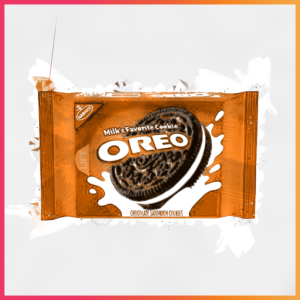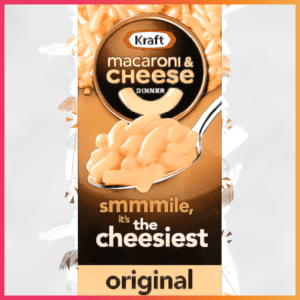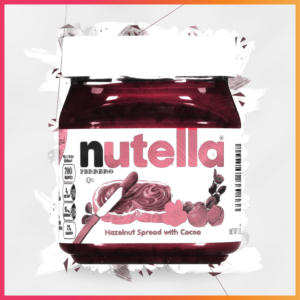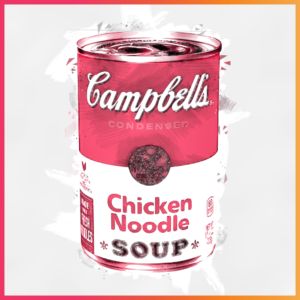We’ve all experienced it. Maybe a fast-food menu item that’s been our Friday-after-work treat for years tastes spicier, or perhaps we’ve noticed the air-to-chip ratio of our favorite chip brand has shifted since we last remember. When we detect even the slightest change in our favorite products, it’s easy to feel annoyance or frustration. The quote “if it’s not broken, don’t fix it” might come to mind, or, depending on how much we love this brand, we can even feel a bit betrayed. What we might not realize in the moment is that evolving product offerings are important for measuring up to health standards and even improving the quality of your experience! When companies alter their product recipes carefully and consider what is loved the most about them when making small recipe changes, the newer version can actually be better for both the company and customers. How is this possible, you ask? All thanks to the help of consumer testers who give their much needed opinion when it comes to taste, texture, and flavor while the recipe is being tested. When impactful consumer insights join forces with product assessment, the new recipe can provide more nutritional value and fewer ingredients you can’t pronounce while staying just as delicious as the original version. Check out this list of 10 iconic brands who managed to do just that!
“To improve is to change; to be perfect is to change often.”
-Winston Churchill

1. Oreo changed their recipe so everyone can enjoy their cookies.
Making changes to the beloved Oreo recipe sounds like the kind of move that might spark a riot, but in 1997, Oreo proved that change could make products more inclusive. In 1997, Nabisco adjusted all its brand recipes to remove non-Kosher ingredients such as pig fat so more chocolate and cream lovers from around the world can enjoy its delicious cookies and snacks! Oreo’s transition took around three years to fully complete and was a very costly switch by all accounts! Based on Oreo’s unwaning popularity nearly 25 years after the recipe, the Kosher conversion proved highly successful. In fact, it’s the world’s most popular cookie! Not too surprising when you consider that unmatched dunking game.
On another note, did you know that women are more likely to pull Oreos apart before eating them?

2. Dominos acknowledged a need for change, improved their recipe, and moved on.
If you’re a pizza lover, you’ve probably noticed Domino’s has stepped up their pizza game in the last decade. The pizza giant used self-deprecating humor to announce their recipe revamp and publicly acknowledged how they’d been missing the mark while highlighting a newfound intention to develop higher quality products. .Dominos released a campaign that capitalized on how bad their recipes have been (comically referring to their pizzas as cardboard) and making fun of how long it took for them to correct their missteps (“only 50 years too late”). This attention-grabbing act of taking responsibility for their lackluster pies communicated that the recipe changes on the horizon were so bold, they wanted their consumers to notice the difference. Dominos then introduced a more evolved, higher-quality product that changed the trajectory of their brand and skyrocketed customer acceptance.
Did you know there are 35 million different ways to create one Domino’s pizza? Now that’s a pie with possibility.

3. Kraft sneakily made their Kraft Macaroni and Cheese healthier
In one of the largest blind taste tests of all time, Kraft switched out the artificial food dye with paprika, annatto, and turmeric to naturally recreate their signature bright orange-yellow color. They made the shift from the artificial food dyes Yellow No. 5 and No. 6 to natural ingredients in late 2015, and consumers who’d been snacking on Kraft Mac and Cheese for their entire lives never noticed the difference. When CNN reported that Kraft had made a significant recipe change several months earlier, the brand had already sold over 50 million boxes without so much as an arched eyebrow from consumers. Like a mother who hides vegetables in her children’s pizzas, Kraft sneakily proved just because a food is healthy doesn’t mean it can’t be delicious.
Kraft Macaroni and Cheese was hit right off the bat! When it first launched in 1937, Kraft sold over 9 million boxes of cheesy goodness.

4. McDonald’s nixed artificial ingredients in their desserts.
If you’ve ever had a McDonald’s soft serve cone, you’ve probably noticed the smooth, creamy, and icy mixture is a far cry from ice cream. What you probably didn’t notice if you’ve had one recently, however, is a recipe revamp that cut out all preservatives, artificial colors, and flavors. Taking a page from Kraft’s playbook, the fast-food giant also switched up its traditional recipes without announcing it to consumers. After months of no customer complaints, Mcdonald’s came clean about the wide-sweeping ingredient upgrade that changed 60% of their dessert menu. Turns out, iconic brands really can make their products healthier while not telling their consumers about the switch.
Did you know over 68 million people eat at McDonald’s every day? That’s the entire population of the UK!

5. Coca-Cola quietly slashed sugar levels for the European market.
Yet another iconic brand who covertly evolved their product recipe to see if consumers could taste the difference, Coca-Cola removed a large percentage of sugar from two of their products, Fanta and Sprite, in Europe and Australian markets. In a test that secretly shaved 30 percent of the calories off of these traditionally insanely sugary drinks, consumers never noticed that the recipe had changed. The test was only revealed in a 2017 interview with CEO James Quincey when he spoke about reaching a new generation of soda consumers who weren’t as keen on sugar. Coke’s sly sugar re-evaluation proved consumers don’t need a full serving of sugar to enjoy the full Coke flavor!
Here’s a refreshing fun fact: In World War 2, Dwight Eisenhower handed a Coca Cola to a Russian General who resisted German forces. He enjoyed it so much; he requested a clear version to secretly enjoy Coca-Cola without facing the scrutiny of a Stalin-era Russia.

6. Boston Market minimizes mac + cheese sodium without sacrificing flavor.
Boston Market spent an entire year running consumer tests and identifying the perfect way to cut sodium without affecting their macaroni and cheese taste. After 15 iterations, the restaurant finally figured out that with an 18% sodium decrease, consumers wouldn’t be able to notice the difference and they’d also be able to honor their commitment to decreasing salt levels in their food. Though consumers say they want healthier options, they also refuse to budge when it comes to taste. Industry-leading insights companies such as Curion empowers brands to make positive changes to their recipes without angering loyal customers. You can play a pivotal role in helping restaurants do just this by signing up as a consumer tester! Interested? Find out more here.
Contrary to (understandable) popular belief, Boston Market started in the small Massachusetts town of Newton — not Boston!

7. Nutella made a few recipe swaps, but consumers didn’t love the secrecy.
It truly takes a lot for someone not to love Nutella — a spoonful of the creamy, smooth, hazelnut chocolate spread provides the perfect indulgence for so many. When Nutella upped the levels of skim milk and sugar for the European market, most people didn’t taste a difference. They made another small recipe adjustment for the US market that included swapping out skim milk for whey protein, which also went unnoticed. Consumers weren’t upset by the taste of the new recipe, but many voiced frustrations that the brand didn’t announce the change to their recipes. Unlike the fast-food restaurants that launched blind test tastes with consumers, Nutella faced scrutiny on both sides of the Atlantic for lack of communication.
Here’s a sweet fun fact: Ferrero, the makers of Nutella, buy about a quarter of the world’s hazelnut supply every year. That’s more than 100,000 tons of hazelnuts.

8. Wendy’s stepped up their chicken nugget game.
After years of being criticized for the texture of their chicken nuggets, Wendy’s decided to start using meat from smaller birds, which have juicier and more tender meat. Consumer testing highlighted just what was missing from Wendy’s chicken nuggets and paved the way for a higher quality chicken experience. Using larger birds increases the dryness of meat, as well as rubbery taste and white strips. This is because modern-day chickens are usually around twice the size of their ancestors. Wendy’s $30 million effort to source smaller birds will reportedly shrink the average chicken size by 20%. Gail Vendrick, senior director for protein procurement, stated, “It’s all about the texture and how juicy it is,” in an interview with Business Insider about the changes. Wendy’s rolled out the new and improved chicken filets at the beginning of 2017 and hasn’t looked back.
Did you know Wendy’s frosty has been around since the first restaurant opened its doors in 1969? Then, they cost approximately 35 cents.

9. Campbell’s Soup shifted its recipe towards more natural ingredients.
In 2015, Campbell’s Soup took inventory of the ingredients that made up their classic soups and slashed chemicals such as potassium chloride, monosodium glutamate, and maltodextrin. While the original Campbell’s chicken soup contained about 30 ingredients, the revamped recipe only has 20 ingredients, most of which you could find in a person’s kitchen cabinet. Around the time the new soup recipe was launched in 2015, soup sales were declining steadily. Other soup companies, such as General Mills (who makes Progresso soups), saw a similar slump in revenue. However, when the pandemic hit, Campbell’s soup (with new and more natural ingredients) spiked in sales by 12%, then 17% the next quarter. As of Q2 2021, soup sales have continued to increase (reportedly by 10% as compared to Q1). Though Campbell’s expects soup sales to decline again over the next decade, the ingredient audit of 2015 was inarguably a smart move.
Campbell’s Soup originally started as a jelly company. Joseph Campbell was a fruit vendor who teamed up with Abraham Anderson, who was in the canning business in 1869 to form Campbells. The pair originally sold canned vegetables, fruit preserves, and jars of butter.

10. Taco Bell adjusts cheese recipe, losing the artificial food dye.
When it comes to late night snacking, Taco Bell is hard to beat. The Mexican-American fast-food hybrid is inarguably a brand consumers don’t eat to be healthy. When Taco Bell replaced the artificial ingredients in their nacho cheese with higher-quality components, they risked facing backlash from consumers who missed the original recipe — artificial flavors and all. With the help of consumer testing, Taco Bell created a new nacho cheese recipe that consumers loved just as much. Their decision to go out on a limb and make a healthy change to their products proved largely beneficial — the fast-food chain announced in a recent press release that they plan on opening around 9,000 new stores across the US in the next five years.
The chihuahua who starred in Legally Blonde also played Taco Bell’s mascot in the late 90s. Though the little dog spouting the words “Yo quiero Taco Bell” became a bit of a cultural icon (What? Like it’s hard?), the ads never translated into increased sales.
Though making significant recipe changes can pose a risk of rejection and failure, consumer testers help mitigate that risk and fuel success like the food brands above experienced. Every time consumer testers participate in a paid research study or taste test, they help pave the way for iconic brands to optimize their offerings while retaining their loyal customers.
Want to become a consumer tester and help brands reach their full potential?
You’re in luck! We could always use an extra set of discerning taste buds around here. Head to our registration page to sign up now.
We can’t wait to continue to inspire brand-name products to move into the future with you by our side.
